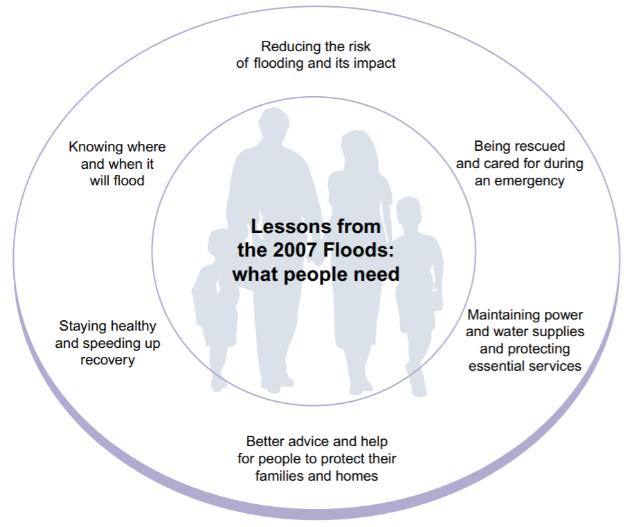This week (11-17 November 2019) marks London Flood Awareness Week. The event is a partnership of the Mayor of London, Environment Agency, Thames Water and London Resilience working together to improve awareness of flood risk and help Londoners prepare for the winter months. Details of the event and a simple awareness test as well as your flood risk can be found here.
Away from London, it is distressing to see pictures of homes and businesses flooded in south Yorkshire and the east Midlands. Such pictures are becoming all the more common around the UK. Climate change is generating wetter winters but flash floods can occur at any time. Adaptation as well as mitigating measures are needed in response.
Ironically, some of the same areas of the country that are now inundated witnessed similar scenes in 2007. Around 55,000 properties were then flooded, 7,000 people had to be rescued and 13 people died in June and July 2007. Nearly 500,000 people were left without water or electricity and the insurance bill was expected to be more than £3 billion. That year was a year of more than 200 major floods globally, causing £40 billion worth of damage. However, the floods in England were the most expensive to date.
As a result of the damage in 2007, the government set up the Pitt Review which reported in mid-2008 with over 90 recommendations. Sir Michael Pitt was asked to carry out a review focusing on: flood risk management, the resilience and vulnerability of critical infrastructure, the emergency response, emergency planning and the recovery phase.
Key recommendations of the review included:
- Establishing a cabinet committee to address the risk of flooding.
- Adopting a long-term approach to flood risk management, with priority given to adaptation and mitigation, and above inflation increases in the resourcing of flood resilience measures.
- Establishing a National Resilience Forum to facilitate emergency planning at a national level.
- A presumption against building in high flood risk areas.
- Pre-planning financial arrangements for responding to exceptional emergencies.
- Action to ensure the resilience of critical infrastructure such as power, water and transport (in particular dams and reservoirs).
- A wider brief for the Environment Agency, taking a national overview of all flood risk.
- A ‘step change in the quality of flood warnings’ with the Environment Agency and the Met Office working to improve forecasting, modelling and warning systems.
- Establishing a national capability for flood rescue.
- Using armed forces personnel to provide logistical advice during civil emergencies.
- Providing better information, awareness and advice.
- Preventing householders from laying impermeable surfaces on front gardens.
- Removing the automatic right to connect surface water drainage from new developments to the sewerage system.
- Local authorities leading on the management of local flood risk.
- Preparation of emergency flood kits by the public.
- A Director in Defra overseeing the programme of delivery and issuing regular progress updates.

The government produced a ‘final progress report’ on the implementation of the findings of the Pitt Review in 2012 and the details can be found here.
No doubt, the review will be revisited after the most recent floods in an effort to establish lessons learnt in a repeat event. It is clear that the response to the current situation on a number of levels has been inadequate. One of the significant features that has emerged already is the value of community and the role that self-help plays when traditional services fail.
For further reading, please visit our Knowledge Hub.



